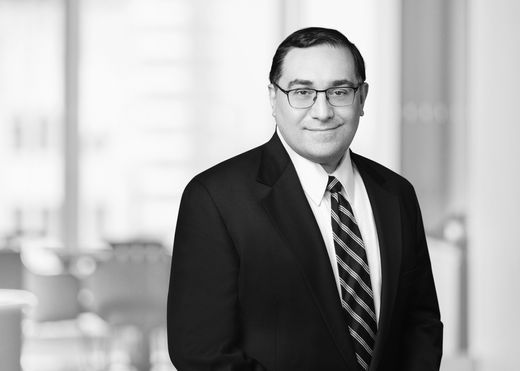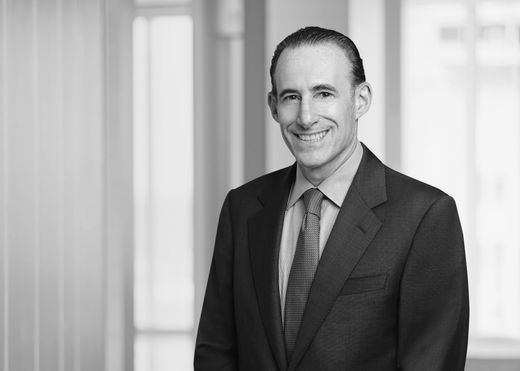Court Of Appeals Reins in Prosecutors in Insider Trading Cases

In a landmark insider trading decision issued on December 10, 2014, the U.S. Court of Appeals for the 2nd Circuit made important pronouncements favorable to the defense on two recurring and important legal issues: (1) what is the standard for an improper personal benefit to a tipper in cases where there is no direct financial quid pro quo; and (2) what level of knowledge regarding the personal benefit is required on the part of a downstream tippee. The Court of Appeals’ decision reins in recent aggressive prosecutions that have pushed the limits of insider trading law. It will also affect future U.S. Securities and Exchange Commission (SEC) enforcement cases, especially those brought in the 2nd Circuit.
In United States v. Newman, No. 13-1837-cr (L) (2d Cir. Dec. 10, 2014), the 2nd Circuit threw out the insider trading convictions of Todd Newman, a portfolio manager at Diamondback Capital Management, and Anthony Chiasson, a portfolio manager at Level Global Investors. Both defendants had been convicted of conspiracy and securities fraud for trading in the securities of Dell and NVIDIA based on material nonpublic information that they obtained from analysts who worked at their firms. The analysts, in turn, had obtained the information via a multi-level disclosure chain originating with insiders working at Dell and NVIDIA. Newman and Chiasson were three and four levels removed from the original tippers, respectively. Their trades in these securities resulted in profits of $4 million and $68 million for their hedge funds. The information at issue consisted of the companies’ nonpublic earnings numbers.
The U.S. Attorney for the Southern District of New York brought criminal charges against the two portfolio managers on the premise that, as sophisticated traders, they must have known that the information was originally disclosed by insiders in breach of their fiduciary duty and not for any legitimate purpose. At the close of the prosecution’s evidence, the defendants moved for a judgment of acquittal because there was no evidence that the corporate insiders provided inside information in exchange for a personal benefit or that the defendants, as downstream tippees several levels removed from the original sources of the information, knew of any such benefit. The District Court denied the motion and instructed the jury that knowledge of a breach of a duty of confidentiality by the tipper (and not knowledge of the personal benefit received by the tipper) was all that was required to convict the defendants as downstream tippees. Newman and Chiasson were convicted and sentenced to 54 months and 78 months’ imprisonment, respectively, plus multi-million dollar fines and forfeitures.
In the December 10th decision, the 2nd Circuit reversed the convictions of Newman and Chiasson and dismissed the charges against them, finding the jury instruction erroneous and the evidence insufficient to sustain the convictions under the applicable legal standards. The 2nd Circuit’s decision is important in two respects. First, it provides much needed guidance as to what constitutes a personal benefit when the tipper has not received a financial payment or other tangible thing of value. Second, it revitalizes the requirement that a tippee must know that the insider received a personal benefit.
A Personal Benefit Must Amount to a Potential Gain of a Pecuniary or Similarly Valuable Nature and Must Resemble a Quid Pro Quo
In the seminal case of Dirks v. SEC, 463 U.S. 646 (1983), the U.S. Supreme Court held that an insider (a “tipper”) who discloses material non-public information to another party who subsequently uses the information as the basis for securities trading (a “tippee”) violates a fiduciary duty, and thus engages in securities fraud, if the tipper discloses the information for the purpose of obtaining an improper personal benefit. Over the years, the U.S. Department of Justice (DOJ) and the SEC have used theories of tipper-tippee liability with increasing frequency. The tipper-tippee framework has been especially important in prosecutions of hedge fund portfolio managers, who often receive information indirectly and with little if any knowledge as to the original source of the information. In a number of previous insider trading cases, the benefit provided to the tipper was readily apparent in the form of cash payments or similarly straightforward economic benefits. In Dirks, the Supreme Court held that the benefit can extend beyond financial payments. However, in cases over the years where there was no clear financial quid pro quo, judicial interpretation of the nature of the required personal benefit has been limited, and the required legal standard has been somewhat murky.
In Newman, the 2nd Circuit provided much-needed clarity by offering detailed guidance on what does and does not constitute an impermissible personal benefit to the tipper. While recognizing that the concept of personal benefit can extend beyond financial payments, and may arise from a close relationship between the tipper and tippee, the court made clear that these situations must be closely examined to ensure that the benefit is sufficiently direct and tangible. In this regard, the court held “that a personal benefit may be inferred from a personal relationship between the tipper and the tippee where the tippee’s trades resemble trading by the insider himself followed by a gift of the profits to the recipient.” The court further held, however, that such an inference is “impermissible in the absence of proof of a meaningfully close personal relationship that generates an exchange that is objective, consequential, and represents at least a potential gain of a pecuniary or similarly valuable nature.” The court added that this evidence must suggest a quid pro quo or an intention to benefit the recipient. Rejecting the government’s arguments for a more relaxed standard, the court noted that “the mere fact of a friendship, particularly of a casual or social nature” is not sufficient to satisfy the benefit requirement. “If that were true, and the Government was allowed to meet its burden by proving that two individuals were alumni of the same school or attended the same church, the personal benefit requirement would be a nullity.”
Applying this standard to the evidence in the case, the Newman court noted that the Dell insider was a business school classmate and former co-worker of the tippee, and that the tippee had provided career advice to the Dell insider, including help with his resume, but they were not close friends. The NVIDIA insider knew the tippee from church and they were family friends, but no tangible benefit passed between them. The 2nd Circuit held that these connections were insufficient to prove that either of the tippers received a sufficient personal benefit from their disclosures, finding that “if this was a ‘benefit,’ practically anything would qualify.”
Although the Court of Appeals’ holding will be applicable only to future criminal or civil insider trading cases brought within the 2nd Circuit, it will be given close attention in any future tipper-tippee case.
The Tippee Must Know That the Insider Received a Personal Benefit
In Newman, the 2nd Circuit also addressed a second, equally critical issue—the level of knowledge required on the part of the remote tippee. Relying on Dirks and Chiarella v. U.S., 445 U.S. 222 (1980), the court found “no support for the Government’s contention that knowledge of a breach of the duty of confidentiality without knowledge of the personal benefit is sufficient to impose criminal liability.” The 2nd Circuit held that “a tippee’s knowledge of the insider’s breach necessarily requires knowledge that the insider disclosed confidential information in exchange for personal benefit.” This is so, the court reasoned, because the requirement of a personal benefit to the tipper is a necessary ingredient of the breach of duty element that is a requirement of an insider trading violation under Section 10(b) and Rule 10b-5. As the opinion states, “the insider’s disclosure of confidential information, standing alone, is not a breach” unless there is a personal benefit to the tipper. In its opinion, the court was critical of the government’s “recent insider trading prosecutions, which are increasingly targeted at remote tippees many levels removed from corporate insiders,” and noted that it had not found “a single case in which tippees as remote as Newman and Chiasson have been held criminally liable for insider trading.”
Turning to the evidence in the Newman case, the 2nd Circuit found that even if the “scant evidence” of a personal benefit was sufficient (which, the court held, it was not), the government presented no evidence that Newman and Chiasson knew of the benefit or that they consciously tried to avoid such knowledge. In this part of the opinion, the court elaborated on the realities of the modern investment marketplace. The court discussed the fact that analysts at hedge funds routinely develop their own models of a company’s metrics, such as revenue, operating margin and earnings per share, and use publicly available information and educated assumptions to do so. They also talk to company insiders in order to check their assumptions in their models. The court pointed out that the evidence showed that company investor relations personnel sometimes “leak” earnings data in advance of public earnings announcements. Indeed one email to that effect was introduced at the trial. In light of this reality, it was not surprising that the analysts’ models might be very close to the actual numbers that the company ultimately released. This is an important part of the court’s decision, as it provides fertile ground on which traders in these cases can show that their trades were based on a mosaic of available public information, rather than impermissibly obtained material nonpublic information.
Implications of the Court’s Decision
The Newman decision has been heralded by members of the defense bar. Perhaps not surprisingly, the government has taken a different view. After the decision was announced, the U.S. Attorney for the Southern District of New York issued a statement that “[t]oday’s decision by the Court of Appeals interprets the securities laws in a way that will limit the ability to prosecute people who trade on leaked inside information.” The U.S. Attorney also expressed the view the decision appears “to narrow what has constituted illegal insider trading” and that his office was considering options for further appellate review. Of note, en banc review by the full 2nd Circuit is only granted in rare cases. A government petition seeking Supreme Court review is also an option, but that may not help the government because a recent statement by Justices Scalia and Thomas indicates that at least some members of the Supreme Court may be interested in narrowing the law in this area. The 2nd Circuit’s opinion affects not only criminal insider trading cases, but also civil cases brought by the SEC. The SEC’s cases rely on the same securities fraud statute as the criminal prosecutions, albeit with a lower standard of proof (preponderance of the evidence rather than beyond a reasonable doubt) and a lesser standard of intent (recklessness as opposed to willfulness). In the wake of the Newman decision, SEC Chair Mary Jo White offered her preliminary assessment that the decision was a “concern” and took an “overly narrow” view of insider trading law.
For investment professionals, the opinion provides additional clarity following the recent barrage of insider trading cases, which have seen numerous convictions involving an ever-widening net cast by the government. The opinion notes with approval the rigorous analysis and modeling done by investment professionals and the propriety of analysts gathering information from companies in order to check assumptions in their models. But the opinion also leaves much unchanged. The opinion does not change the law for cases involving prosecutions of defendants who trade in breach of their own duties, such as corporate employees or individuals who trade on information after agreeing to treat it as confidential. Nor does it foreclose the possibility that the government could establish the requisite knowledge on the part of downstream tippees by relying on the legal theory of “conscious avoidance,” which can be roughly equated to sticking one’s head in the sand in order to avoid confirming a fact that is obvious. But for tippees who do not know the insider or how the information was obtained, the opinion makes clear that the government must clear a significant evidentiary hurdle in order to establish the necessary knowledge and intent.
While the decision clearly represents an important defense victory, there are other tools in the government’s arsenal to continue its fight against insider trading. For example, the government may make more aggressive use of SEC Rule 10b5-2, which provides that a person can take on a duty of trust or confidence for insider trading purposes by “agree[ing] to maintain information in confidence” or if there is a “history, pattern, or practice of sharing confidences.” The SEC may also continue its trend of bringing insider trading cases through administrative proceedings, where Newman would not be binding precedent, in an effort to develop a body of law that dilutes its effect. The SEC could also bring lesser charges, such as failure to supervise, against investment managers based on the theory that they negligently disregarded signs that there was a risk that their subordinates might be obtaining inside information, even though the managers themselves did not have sufficient knowledge of a personal benefit. Whatever the government’s next move, Newman is likely to cast a large shadow. The SEC and DOJ are no doubt assessing their enforcement dockets carefully to determine which cases have facts that will make them good vehicles to develop better law from the government’s perspective and which ones should be settled for lesser charges or abandoned altogether.
From a compliance perspective, Newman offers additional clarity but will in most cases not alter the long-established approach of thoroughly vetting any trading scenario presenting even a colorable risk of insider trading liability. Given the complexity of insider trading law, and the severe consequences of a violation, it remains advisable to approach these issues with a high degree of caution in the context of real-life trading scenarios.





